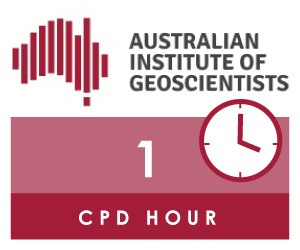| |
 A Centre for ExplorationTargeting Presentation by Peter Kovesi.
A Centre for ExplorationTargeting Presentation by Peter Kovesi.Many colour maps provided by vendors have highly uneven perceptual contrast over their range. It is not uncommon for colour maps to have perceptual flat spots that can hide a feature as large as one tenth of the total data range. The opposite can also occur whereby perceptual discontinuities in the colour map can induce the appearance of false anomalies. This talk will present a set of design techniques for the construction of perceptually uniform colour maps. Previous work in the design of perceptually uniform colour maps has mostly failed to recognise that CIELAB space is only designed to be perceptually uniform at very low spatial frequencies. The most important factor in designing a colour map is to ensure that the magnitude of the incremental change in perceptual lightness of the colours across the map is uniform. The rate of incremental change in hue or saturation of the colours in the map prove to be relatively unimportant. The specific requirements for linear, diverging, rainbow, and cyclic colour maps are developed in detail. The utility of the colour map design techniques are demonstrated using a simple test image that allows colour maps to be readily evaluated. The use of colour in combination with relief shading is considered and the conditions under which colour can enhance or disrupt relief shading are identified. Finally, a set of new basis colours for the construction of ternary images from three channels of data are presented. Unlike the RGB primaries these basis colours produce images whereby the salience of structures in the data are consistent irrespective of the assignment of basis colours to data bands.
Peter holds a part-time position as a research professor with the Geophysics and Image Analysis group within the Centre for Exploration Targeting. Prior to joining the CET he was with the School of Computer Science & Software Engineering at UWA. His research interests are in applying computer vision techniques to geological and geophysical images, with particular interests in feature detection, texture analysis, and visualization techniques.